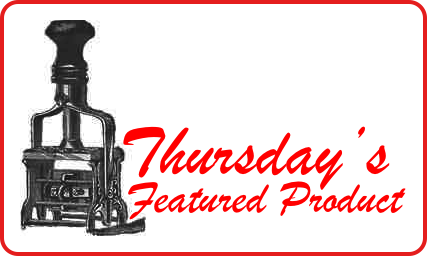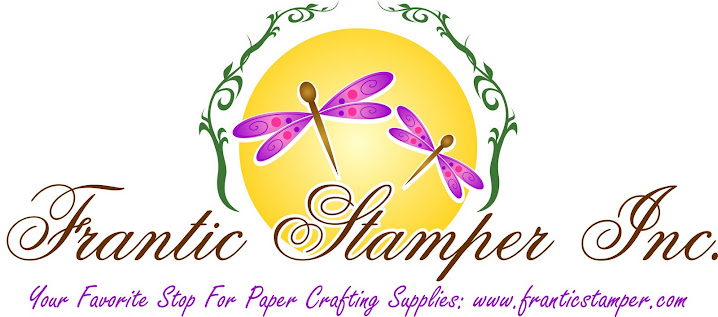 by Kris Hankins
by Kris Hankins

Coloring White Flowers
Most of us use flowers in our artwork at some point in time. I know that I personally use them quite often. I have a huge collection of flowers, but it seems I am frequently missing the color or size that I need. To help remedy this challenge, I started purchasing “white” flowers so that I could color them myself. For example, I buy flowers from Prima’s “Innoscence” collection and Petaloo’s “Color Me Crazy” line. Some white flowers come as a single-layer; others have many layers and centers. Both styles come in many sizes and varieties. When it comes to coloring the flowers there are many products that you can use. Some are newer products, while some have been around for a long time.Here is a sampling of how you can custom color plain white flowers…

The first category of products I tried was “mists”. I am pleased with the results I got from the products I tried. The products I tried were Tattered Angels Glimmer Mists, Maya Mist, Adirondack Color Wash, Tsukineko Walnut Ink, and Shimmer Mists. ALL of them did a fine job of coloring. All gave similar results. But, after trying them all, I have to say that the Glimmer Mist and Walnut Ink were my personal favorites.

Both of these flowers were colored with Tattered Angels Glimmer Mist. The first one was spritzed with two colors; the second one with only one color.
The second group of products I tried was what I call “paintable” products such as Tattered Angels Glimmer Glam, Luminarte’s H2O’s, Distress Paint Daubers, and Pearl-Ex paint, and also, dye reinkers and Distress ink.
Again, all of the products worked fine. My two personal favorites were Glimmer Glam and Luminarte's H2O’s. Both produced beautiful shimmering flowers. I was very pleased with the vintage/worn look given by the Distress Paint Daubers. The Pearl-Ex was best for making “metallic” flowers.

These flowers were painted with Luminarte’s Twinkling H20’s. I really like the color control I had when using these shimmering paints.


This cute little blue flower was made with 2 single-layer white flowers that were painted with H20’s and glued together.
The 2nd flower was colored using Distress Paint Daubers. Makes a very nice vintage, chalky look.
The 3rd flower was laid in dribbles of dye ink on my non-stick sheet, and then stamped.
The 2nd flower was colored using Distress Paint Daubers. Makes a very nice vintage, chalky look.
The 3rd flower was laid in dribbles of dye ink on my non-stick sheet, and then stamped.


This pink flower was painted with a light wash of of inexpensive watercolor paint.
The second was painted with several shades of Pearl Ex paint.
The second was painted with several shades of Pearl Ex paint.

You can see what the plain white flower looks like on the left before it is colored.
The flower on the right was painted with Tattered Angels Glimmer Glam. I love this product on these flowers. It is a thin paint with tons of glitter. It doesn’t over saturate the paper, yet has intense and vibrant color.
The flower on the right was painted with Tattered Angels Glimmer Glam. I love this product on these flowers. It is a thin paint with tons of glitter. It doesn’t over saturate the paper, yet has intense and vibrant color.
You can use a combination of products also.



The pinkflower was first spritzed with Glimmer Mist and then the petal tips were painted with Glimmer Glam.
The multi-colored flower was laid on the my non-stick craft sheet to absorb a variety of left over products/colors.
The metallic flower was saturated with walnut ink, followed by Pearl Ex paint.
The multi-colored flower was laid on the my non-stick craft sheet to absorb a variety of left over products/colors.
The metallic flower was saturated with walnut ink, followed by Pearl Ex paint.
The third group of colors I tried was products such as Tombow markers, chalk, Prismacolor pencils, glitter, and embossing powder. These products definitely are not the first ones that come to my mind when thinking of coloring flowers. I was less than impressed with chalk and colored pencils. The Tombow markers were adequate when brushed with water to blend colors. The glitter and embossing powder both created pretty “glittery” flowers.


The purple flower was colored with water-based Tombow markers. I used a paint brush and a spritz of water to blend colors.
The glittered flower ended up being very pretty. I painted the surface of the flower with Diamond Glaze and added two shades of fine glitter. When it dried, I had a very pretty, rigid flower.
The glittered flower ended up being very pretty. I painted the surface of the flower with Diamond Glaze and added two shades of fine glitter. When it dried, I had a very pretty, rigid flower.
There are many other ways to personalize or “embellish” your newly colored flowers. I successfully stamped on single-layer flowers. Just make sure the flower is dry when you stamp. I used a permanent dye ink (just in case I decided to spritz after I stamped). Also, try using “masks”. They can create some interesting patterns and affects.

This flower was made with 2 single-layer flowers. The bottom layer is a white flower stamped and misted with walnut ink. The top flower was saturated with walnut ink.

This picture shows 3 different ways of coloring a flower with the same 2 colors of Glimmer Mist.
The one on the left was colored using a dotted sequin “mask” taped down over it, followed by the Glimmer Mist.
The top flower also used the same “mask” but it was loosely laid on the flower. The result was a totally different look.
The bottom flower was pressed into the leftover color on the non-stick mat. Three very different, but coordinating flowers.
The one on the left was colored using a dotted sequin “mask” taped down over it, followed by the Glimmer Mist.
The top flower also used the same “mask” but it was loosely laid on the flower. The result was a totally different look.
The bottom flower was pressed into the leftover color on the non-stick mat. Three very different, but coordinating flowers.
Single layer flowers can be used as is or layered. Flower centers can be added, whether it is a single rhinestone or a fancy Prima flower center. All flowers can be accented with Stickles, or a glitter/glaze pen. Use pearls, crystals, beads, Prima flower centers, brads, buttons, etc.



The first flower was a “mistake” (colored with Tombow markers). To avoid the trash can, I pinched the damp flat flower into this shape and added pearls to the center. The result, an attractive dimensional flower.
The 2nd flower was made from two single-layer flowers colored with Glimmer Mist. A simple red rhinestone was added to the flowers center.
The 3rd flower was colored using Distress ink. Looks perfect for Halloween with a choice of festive buttons for the flower center.
The 2nd flower was made from two single-layer flowers colored with Glimmer Mist. A simple red rhinestone was added to the flowers center.
The 3rd flower was colored using Distress ink. Looks perfect for Halloween with a choice of festive buttons for the flower center.
Personalized (and coordinating) coloring is not limited to flowers. Remember, you can custom color ribbon, floral trims, twill, fabric, canvas, paper, die cuts, chipboard, and much, much more.
Have fun. Experiment and let your imagination go! There is no limit.


Great ideas here. Thanks so much for all the creative thoughts.
ReplyDelete